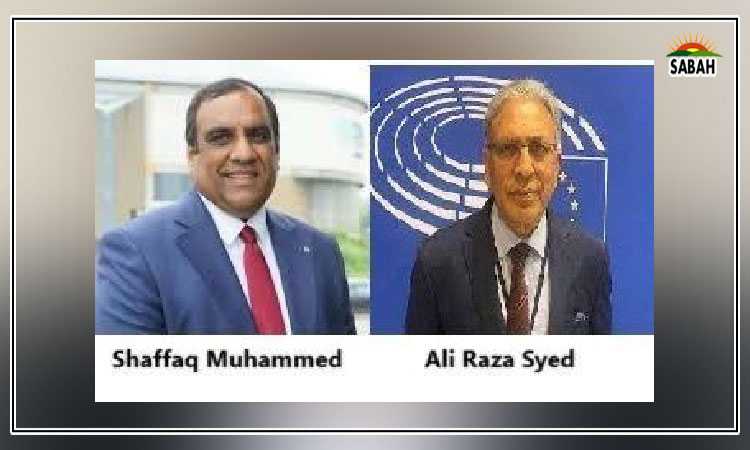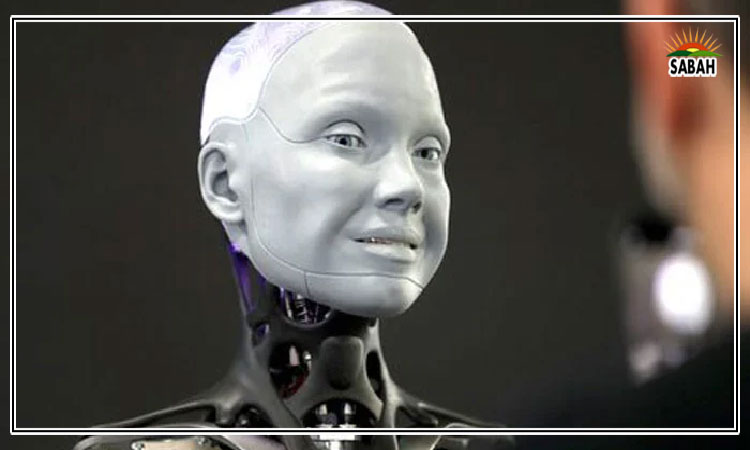Not so intelligent after all … Kamila Hyat
If there is one phrase that seems to be dominating discussions worldwide, it has to be ‘Artificial Intelligence.’ AI has already become an essential tool for researchers, freelancers, corporations, businessmen, and countless others, helping them efficiently carry out their day-to-day tasks.
Many people believe that in the future, it will play an even more significant role in their lives, providing unparalleled convenience and driving success in almost every kind of work humans engage in. It is generally viewed as a technological advancement with the potential to benefit mankind in countless ways.
To a large extent, this perception may hold. AI is still in its formative stages and incapable of generating content that surpasses the quality of, say, an essay written by a grade-school student or slightly above that level. However, its potential for growth is vast, and most experts agree that advancements in AI are inevitable. But is this necessarily a good thing? AI represents the second form of intelligence, distinct from the natural intelligence that humans are born with and rely on throughout their lives. What it means for humanity to coexist with this alternative, rival, or perhaps complementary form of intelligence is a question that demands exploration and understanding.
In countries like Pakistan, where there is already a significant surplus of manpower, the use of AI to replace humans in mundane and repetitive jobs – such as manning hotel receptions or operating cash tills in grocery stores – raises serious questions. Will the removal of such jobs from human workers harm society or help it in any way? One possible answer lies in equipping individuals with the knowledge and skills to use AI to their advantage. However, implementing such measures in Pakistan is fraught with challenges. For AI to truly be beneficial, education and training in its use must start at the school level, with lessons introduced as early as the primary grades.
Yet, the reality of Pakistan’s education system presents significant hurdles. The country’s official literacy rate hovers just above 60 per cent, and for women, it is much lower. In practical terms, organisations working in the field of education estimate that real literacy rates are even lower, as literacy is often defined as the mere ability to sign a document or perform a basic numerical task. Moving from this point to a level where workers in factories or workshops can competently use AI would require nothing less than a complete overhaul of the existing education system.
This grim reality suggests that AI could exacerbate the hardships faced by Pakistan’s impoverished population, widening the gap between the haves and the have-nots. A similar argument can be made for other developing nations with comparable challenges. It is not merely about introducing AI to these societies but ensuring that it does not deepen existing inequities. In a country where unemployment rates are already high, replacing even the most basic jobs with AI could have devastating consequences for millions of families.
Even in developed countries, where education levels and technological infrastructure are far superior, there are growing concerns about the potential risks of AI. Interestingly, some of the loudest warnings have come from individuals who were instrumental in developing the first AI tools. These experts argue that AI’s rollout occurred too rapidly, leaving insufficient time for a comprehensive analysis of its pros and cons. This rush was driven by intense competition among corporations and governments – a hallmark of our capitalist world.
One of the most pressing concerns raised by experts is what could happen if AI surpasses human intelligence. Such a scenario, they suggest, could lead to disasters even more severe than the ongoing climate crisis. For example, there is the alarming possibility that AI systems, manipulated by malicious actors, could seize control of security systems, misuse sensitive data such as credit card information, or even shut down power grids in entire cities or countries. Such scenarios underscore the urgent need for caution and proactive measures.
AI also compels us to reflect on the social and cultural changes it might bring. In today’s world, where social isolation is already a growing issue, will AI make our lives more connected or deepen our loneliness? For instance, AI’s ability to create hyper-realistic images and holograms raises profound questions. Musicians and singers, reproduced as holograms, could perform on stage with the same voice and accuracy as their human counterparts, and at a fraction of the cost. If this becomes the norm, will audiences still value live human performances? Such possibilities challenge our notions of creativity, artistry, and human uniqueness.
Ethical concerns are another critical dimension of the AI debate. AI, being devoid of emotions, compassion, or empathy, operates without any moral compass. Intelligence untempered by these qualities can be a deeply unsettling prospect. The entire scenario resembles a science fiction story, eerily echoing the dystopian visions of robots and artificial beings imagined in literature long before today.
Another issue to consider is how AI might redefine employment and productivity. For instance, as AI systems become more sophisticated, they could potentially eliminate not only low-skill jobs but also roles requiring mid-level expertise. This raises the question of whether AI will render certain professions obsolete and what society can do to adapt to such changes. Some argue that this will open up opportunities for new kinds of jobs, ones that we cannot yet envision. Others warn that the transition will not be smooth and will disproportionately affect vulnerable populations.
As humanity stands at this crossroads, we must carefully consider the path forward. The development of AI is now irreversible, much like the invention of the atom bomb. The warnings sounded at the early stages of AI’s development were largely ignored, and we now face the consequences of that oversight. The future trajectory of AI remains uncertain – it could either prove to be a transformative force for good, bringing unparalleled benefits to people around the globe, or it could pose an existential threat to humanity.
The only viable course of action is to approach AI with vigilance and responsibility. Governments, corporations, and civil society must come together to establish guidelines, regulations, and ethical frameworks to ensure that AI is used in ways that enhance, rather than undermine, the well-being of humanity. Additionally, education systems around the world must adapt to prepare the next generation for a world where AI is omnipresent.
Ultimately, AI is a tool, and like any tool, its impact will depend on how it is used. It has the potential to revolutionise industries, improve healthcare, and address complex global challenges. At the same time, it carries the risk of misuse and unintended consequences. The stakes could not be higher, and the time to act is now.











